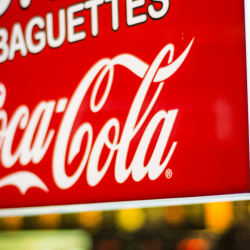To say that AI was the hot topic of 2023 would be an understatement
However, as many rush to experiment with new tools and apps, we think it’s essential for brands to consider the effect of AI on culture and in turn the role they might need to play. What do we mean? Let us explain below. The 2010s saw the world shift from legacy media to social media for its primary source of information. This shift saw an exponential rise in fake news and misinformation, which sent shock waves around the world. Vaxxers fought anti-vaxxers. Brexit leavers fought remainers. Trump voters fought Biden supporters. Societies simply had become more divided and fractured than ever before. As we enter 2024 the rise of fake news, misinformation and the distortion of reality is likely to get far worse. As AI tools progress at an exponential rate and the barriers to creativity lower, we are going to see yet another seismic shift from the era of ‘deep fakes’ to the era of ‘cheap fakes’.
To those of you who think this is mere speculation, think again. This new reality is already here. In 2023 Google’s latest Pixel smartphone came packed with AI tools built in. Tools that enable anyone to delete unwanted objects and even people from any image. At the same time, some of last year’s biggest ‘break the internet’ moments centred around AI and the creation of fakes.
A mother was fooled into thinking her daughter had been kidnapped by AI voice tech, the internet went wild for a deep fake of the Pope and one of the breakthrough TikTok stars was @deepfaketomcruise. Still not convinced? Well, consider the fact that some predict by 2025 90% of online content will be created with AI.
How should brands best operate in the world? Whilst brands should embrace new AI tools to expedite creativity we believe there is a bigger role for them to play. Because in a world where 68% of consumers are concerned about the spreading of fake news and in a world where 78% of consumers think content created by AI should be clearly labelled, we believe brands should ‘seek the truth’. They should not only be true to themselves but also fight for the truth in their given category.
How might brands best seek the truth? Here are three practical examples
Fight the fake
Dove successfully built on its long-standing brand idea ‘Real Beauty’ in 2023 with its ‘Cost of Beauty’ campaign. A campaign that called out social media’s fake beauty standards and the damaging effects it has on young women around the world. Brands can learn from this, and should look to find ways to fight the fake in their category and the harmful effects it creates.
Be true to yourself
One of the biggest brand fails of 2023 was Bud Light’s partnership with transgender influencer Dylan Mulvaney. The campaign was ultimately a cultural and commercial disaster, with AB inBev‘s suffering a 10.5% drop in sales. Why did it end so badly? Well, in part because the brand simply wasn’t true to itself, neglecting the fact that most of its drinkers were middle-aged men and ultra conservatives. This result made this campaign feel like nothing more than cynical ‘purpose washing’.
Brands should learn from this and in a world filled with fakeness, it has never been more important to be true to yourself.
Reveal the truth
One of the most exciting brand growth stories of 2023 (and a client of Defiant) is ZOE Nutrition. Through their podcast, the brand has grown exponentially in 2023, by revealing the truth about what does (and doesn’t) work when it comes to food and nutrition. Brands should learn from this, and look to create informative and truthful content to educate a wider audience.
‘Seek the truth’ is just one of five trends authored by Rachel Higgins & Will Poskett, in their report ‘The New Reality‘. Download it for free.
Featured image: Khanh Le / Pexels






























